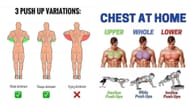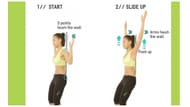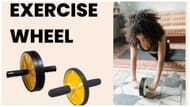You'll never hear people say - "Hey, check out my serratus anterior muscle!". Also known as the boxer's muscle, the serratus anterior is a non-flashy and often overlooked muscle group essential for the protraction and upward rotation of the scapulothoracic (or scapulocostal) joint.
Importance of serratus anterior muscle function
The serratus anterior (SA) is a fan-shaped specific portion of the serratus muscle that originates on the superolateral surfaces of the first to eighth (or ninth) ribs at the lateral wall of the thorax and inserts along the superior angle, medial border, and inferior angle of the shoulder blade (scapula). The serratus anterior muscle is also important for breathing, as it helps to expand the rib cage during inhalation.
Proper serratus anterior action is also required for:
- Stabilizes the scapula
- Sustains upward rotation of the scapula along with the upper and lower fibers of the trapezius muscle
- Supports Overhead arm movement
- Supports breathing along with other accessory inspiratory muscles
When the serratus anterior muscle is weakened, lengthened or tight, scapular protraction and upward rotation are impaired, which leads to limited overhead range of motion and decreased scapular stability. That, in turn, puts more stress on the rotator cuff and shoulder girdle.
A weakened serratus anterior muscle is also responsible for scapular winging. Weak serratus anterior muscles cause the scapular muscles and bones to rotate and tilt to support the back. That results in the medial border of the scapulae protruding from the back like wings, giving the disorder its name.

If you're a sportsman of any kind, or a normal person who performs a lot of overhead and shoulder work, a strong and well-developed serratus anterior muscle can help you increase power output, overhead stability, core strength and overall athleticism.
Best exercises to train serratus anterior muscle
Here're some best exercises for serratus anterior action:
1) Push-up

Push-ups are a basic bodyweight movement that's often overlooked for some reason.
Apart from the serratus anterior muscle, push-ups are an excellent way to train the chest, shoulders, triceps and core. Once you can do 25 push-ups in a row, begin adding weight and performing other variations.
Instructions:
- Place your hands slightly outside shoulder-width. Set your feet hip-width apart and parallel to each other with your legs fully extended.
- Hold a neutral curve in your lower back by flexing the glutes and bracing the core. The shoulders and hips should be in a straight line.
- Bend your elbows to lower yourself towards the floor. The chest, hips, and head should move in a straight line.
- Touch your chest to the floor.
- Push your body away from the floor. Keep your core braced throughout. Repeat.
2) Push-up Plus

Try out this movement if you're struggling to activate the serratus anterior muscle during push-ups. Researchers at the University of Minnesota found that the pushup plus activates the serratus anterior 38% more than the standard push-up.
Instructions:
- Set up as you would for the conventional push-up.Lower down into the push-up, and come back up.
- At the top, pause for a brief second, and push down through the floor further to round the back even more. The aim is to get the scapula to protract around the rib cage.
- Return to your normal push-up stance, and resume the movement. At the top of every rep, aim to protract the scapula using your serratus anterior.
3) Wall Slide

Wall Slides are amazing for you if you're a beginner beginning your fitness journey or an injured athlete looking to build up shoulder strength and overhead stability, this movement may be ideal for you.
This serratus anterior muscle exercise can be done throughout the day in between work - all you need is a wall.
Instructions:
- Stand facing away from the wall. Place your feet together and about a foot distance away from the wall.
- Slowly lean back till your back comes in contact with the wall. Maintain a slight bend in the knees.
- Make sure your entire lower back and upper back is in contact with the wall.
- Raise your arms to the wall, and bend at the elbow.
- Slowly slide both arms up above you, straightening them out as you go.
- Keep your arms and back in contact with the wall till the form begins to break down and you have reached the end of your range of motion.
- Repeat. Your ROM will improve as you progress.
4) Ab Rollout

Looking to blast your core while developing the serratus anterior muscle? The ab rollout is a full body demolisher that also engages the erector spinae, deltoids, chest, lats, biceps, and triceps.
Instructions:
- With the roller in front of you on the floor, grab the grip, and recline forward gently such that the roller is beneath your shoulders.
- Drive the roller ahead as far as you can go without losing form. You will have to slowly build up to full ROM over time.
- Return to the starting position.
- Tighten your abs, and keep your back straight throughout. Use a slow and regulated motion.
Other exercises you can use to effectively target the serratus anterior include scapular push-ups, bear crawls, dumbbell pullovers and dumbbell presses.
Serratus Anterior Pain

If you're experiencing nagging shoulder pain or limited overhead mobility, a weakened serratus anterior muscle might be the root cause. A weak serratus anterior muscle can contribute to shoulder impingement and other shoulder injuries. Perform the aforementioned exercises twice to thrice weekly to build up the serratus anterior strength and size.